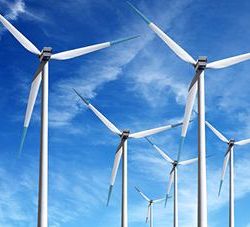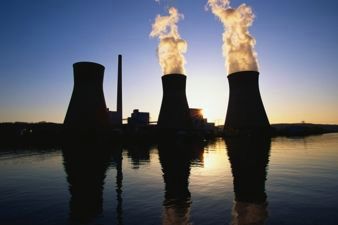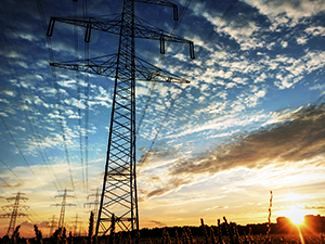 Dearborn, Michigan – Ford Motor Company has cut CO2 emissions at its global facilities by 37 percent per vehicle between 2000 and 2012, and plans for a 30 percent reduction from 2010 to 2025 by addressing everything from new products and technologies to manufacturing processes.
Dearborn, Michigan – Ford Motor Company has cut CO2 emissions at its global facilities by 37 percent per vehicle between 2000 and 2012, and plans for a 30 percent reduction from 2010 to 2025 by addressing everything from new products and technologies to manufacturing processes.
Ford’s work to reduce CO2 emissions is outlined in Ford’s 14th annual Sustainability Report issued on 14th June and more importantly, part of the company’s overall mission to facilitate continued reduction of CO2 emissions.
Green Dialogues with John Viera on Sustainability at Ford
“One of the most impactful way we can reduce emissions is by improving fuel economy in our vehicles. Once our products are off the lot is when they produce the most emissions, and they do so for their entire use phase.
Life cycle analyses have found that 80 to 90 percent of vehicle-related greenhouse gas emissions are emitted during the use phases. Therefore, when we make improvements in fuel efficiency like we have with the EcoBoost engine and with our hybrid and plug-in hybrids, we make sure we are reducing CO2 for a long time after the production of the vehicle.”
– John Viera, Global Director, Sustainability and Vehicle Environmental Matters, Ford.
Read more about this in our brand forum – Green Dialogues.
Already, total CO2 emissions at Ford’s global facilities have dropped by 4.65 million metric tons, or 47 percent since 2000. Ford also delivered on its commitment to reduce U.S. facility emissions by 10 percent per vehicle produced between 2002 and 2012, as part of an Alliance of Automobile Manufacturers program. And vehicle tailpipe emissions on a per vehicle basis have dropped 16 percent since 2007 as new vehicles such as Ford C-MAX Energi plug-in hybrid have become available.
And Ford has even bigger plans to reduce CO2 – one of several priorities outlined in its “Blueprint for Sustainability: Our Journey Continues”. Other subjects in the voluntary report range from reduced water use and energy consumption to cutting the amount of waste-to-landfill at Ford facilities around the world.
“In the more than 30 years I have been with the company, I have seen genuine transformation as Ford has integrated sustainability into its business plan, products, operations and relationships with stakeholders,” says Robert Brown, Vice President, Sustainability, Environment and Safety Engineering. “Water and energy use, waste-to-landfill, Ford’s role in reducing the amount of greenhouse gases like CO2 in our atmosphere – these are just a few of the top sustainability-related priorities considered in every decision.”
Ford Chief Financial Officer Bob Shanks said sustainability issues are embedded in the company’s business plan, and are consistent with its aim to deliver great products, a strong business and a better world.
“We are much more proactive in understanding the importance of sustainability in the broadest sense – not only in relation to our products, but also in the quality of the financial results that we derive from them,” said Shanks, whose perspective is featured in this year’s report.
Ford issued its first voluntary sustainability report in 1999 as a way to summarize and report on the company’s initiatives regarding social, economic and environmental issues. Like Ford’s sustainability-related processes and results, the report has evolved – from a printed booklet similar to an annual report, to being so detailed and comprehensive today that it requires an entire website.
CO2…
In the early 2000s, Ford’s Climate Change Task Force identified a need to address shifting market trends and government regulations – among many other factors – with regard to reducing CO2 emissions.
Investors also are increasingly showing greater concern about climate change as a material risk for companies, creating a much stronger link between climate change-relevant information and initiatives – such as the Ford CO2 Model – and access to capital.
“Beyond those imperatives, we had taken to heart our responsibility to contribute to meeting the challenge of climate change,” says John Viera, Global Director, Sustainability and Vehicle Environmental Matters. (Read Green Dialogues with John Viera on Sustainability at Ford).
Ford has developed products and technologies along with processes at its facilities and plans to meet its own targets while also doing its part to help keep CO2 levels in the Earth’s atmosphere at or below 450 parts per million – a goal many scientists, businesses and governmental agencies say must be met to avoid the most serious effects on climate change.
 Take Ford’s EcoBoost® engines – now on more than 600,000 Ford Motor Company vehicles – that improve fuel economy and cut CO2. And since sales began of Ford C-MAX Hybrid and Ford C-MAX Energi plug-in hybrid, more than 20 billion grams of CO2 have been saved. Emissions from C-MAX Energi are less than half the average CO2 that comes from a regular car.
Take Ford’s EcoBoost® engines – now on more than 600,000 Ford Motor Company vehicles – that improve fuel economy and cut CO2. And since sales began of Ford C-MAX Hybrid and Ford C-MAX Energi plug-in hybrid, more than 20 billion grams of CO2 have been saved. Emissions from C-MAX Energi are less than half the average CO2 that comes from a regular car.
The C-MAX Hybrid and C-MAX Energi are part of six electrified vehicle choices from Ford. Other vehicles are: Fusion Hybrid, Lincoln MKZ Hybrid, Fusion Energi plug-in hybrids and Focus Electric
At its facilities, Ford is expanding its industry-leading 3-Wet paint capacity by 50 percent this year – adding the environmentally friendly process to four more plants on three continents. Increased use of this process, which streamlines the painting process, is expected to reduce CO2 emissions by up to 25 percent where used.




















